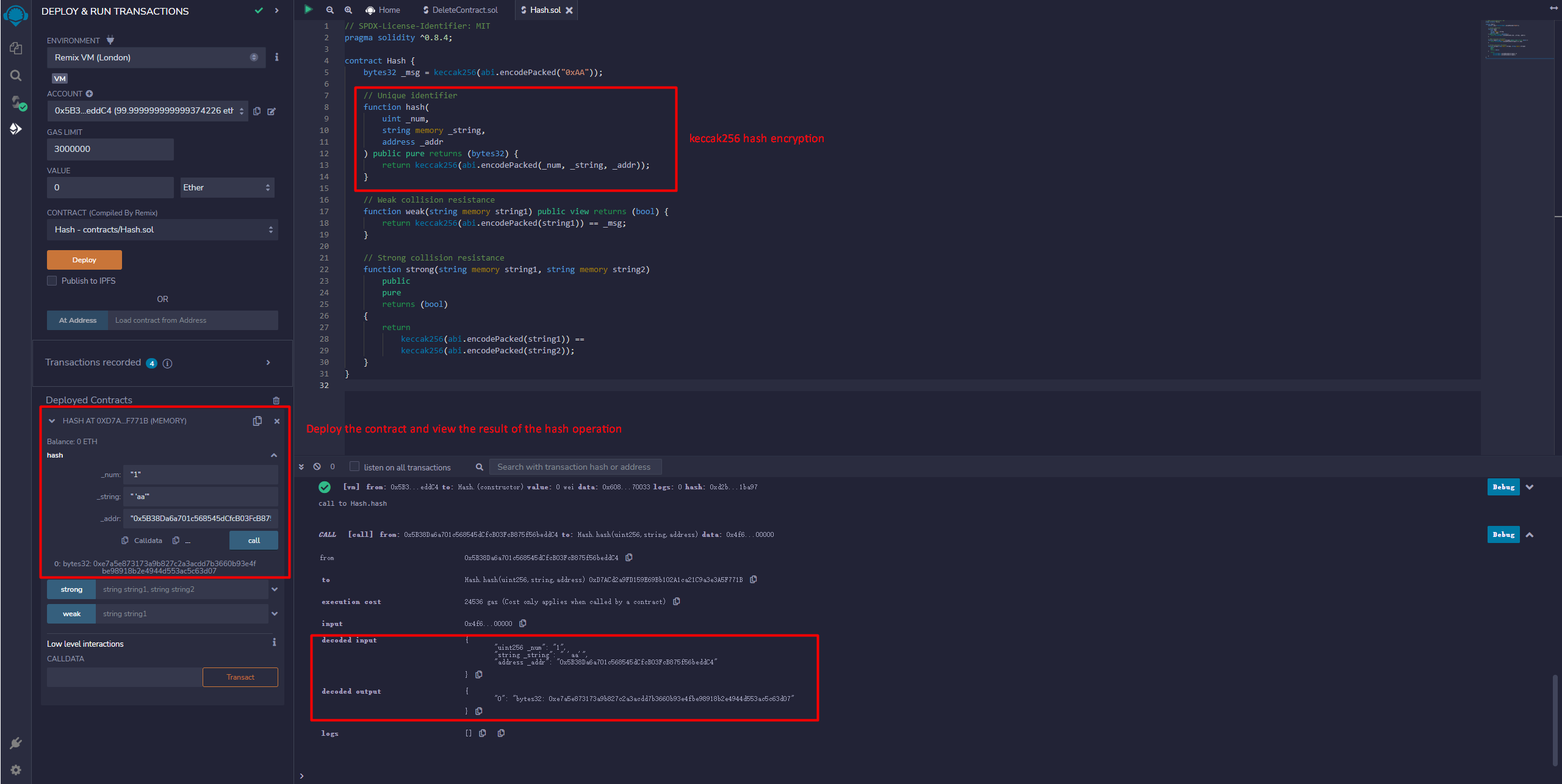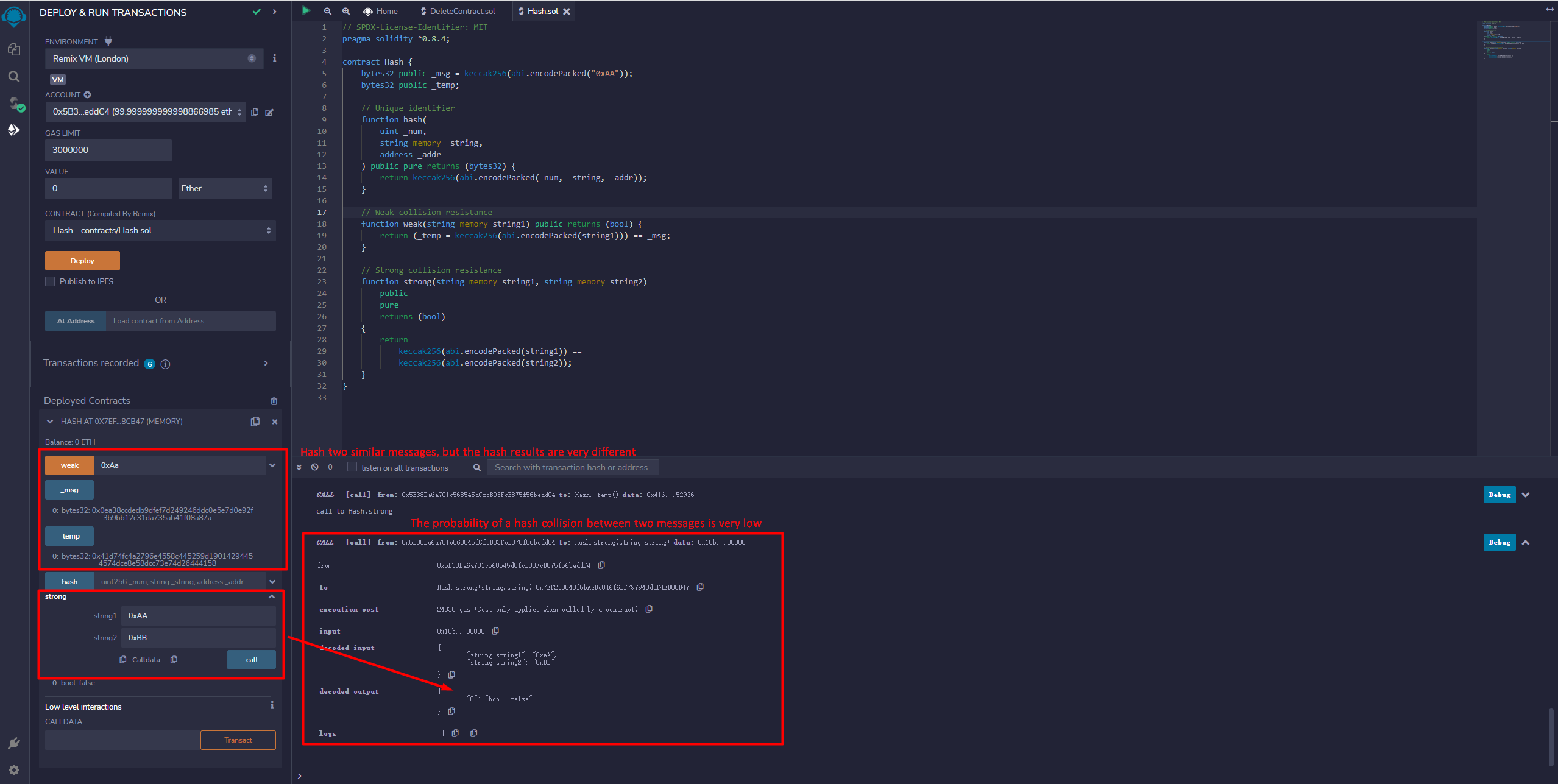WTF Solidity: 28. Hash
Twitter: @0xAA_Science | @WTFAcademy_
Community: Discord|Wechat|Website wtf.academy
Codes and tutorials are open source on GitHub: github.com/AmazingAng/WTFSolidity
Hash function is a cryptographic concept. It can convert a message of arbitrary length into a fixed-length value. This value is also called hash. In this lecture, we briefly introduce the hash function and its application in solidity.
Properties of Hash
A good hash function should have the following properties:
- One-way: The forward operation from the input message to its hash is simple and uniquely determined, while the reverse is very difficult and can only be enumerated by brute force.
- Sensitivity: A little change in the input message changes its hash a lot.
- Efficiency: The operation from the input message to the hash is efficient.
- Uniformity: The probability of each hash value being taken should be basically equal.
- Collision resistance:
- Weak collision resistance: given a message
x, it is difficult to find another messagexsuch thathash(x) = hash(x'). - Strong collision resistance: finding arbitrary
xandxsuch thathash(x) = hash(x')is difficult.
- Weak collision resistance: given a message
Hash application
- Unique identifier for generated data
- Cryptographic signature
- Secure encryption
Keccak256
The Keccak256 function is the most commonly used hash function in solidity, and its usage is very simple:
hash = keccak256(data);
Keccak256 and sha3
Here's an interesting thing:
- sha3 is standardized by keccak. Keccak and SHA3 are synonymous on many occasions. But when SHA3 was finally standardized in August 2015, NIST adjusted the padding algorithm. So SHA3 is different from the result calculated by keccak. We should be paid attention to this point in actual development.
- sha3 was still being standardized when Ethereum was developing so Ethereum used keccak. In other words, SHA3 in Ethereum and Solidity smart contract code refers to Keccak256, not standard NIST-SHA3. In order to avoid confusion, it is clearest that we write Keccak256 directly in the contract code.
Generate unique identifier of the data
We can use keccak256 to generate a unique identifier for data. For example we have several different types of data: uint, string, address. We can first use the abi.encodePacked method to pack and encode them, and then use keccak256 to generate a unique identifier.
Weak collision resistance
We use keccak256 to show the weak collision resistance that given a message x, it is difficult to find another message x' such that hash(x) = hash(x')`.
We define a message named 0xAA and try to find another message which's hash value is equal to the message 0xAA.
// Weak collision resistance
function weak(
string memory string1
)public view returns (bool){
return keccak256(abi.encodePacked(string1)) == _msg;
}
You can try it 10 times and see if you can get lucky.
Strong collision resistance
We use keccak256 to show the strong collision resistance that finding arbitrarily different x and x' such that hash(x) = hash(x') is difficult.
We define a function called strong that receive two parameters of string type named string1 and string2. Then check if their hashed are the same.
// Strong collision resistance
function strong(
string memory string1,
string memory string2
)public pure returns (bool){
return keccak256(abi.encodePacked(string1)) == keccak256(abi.encodePacked(string2));
}
You can try it 10 times and see if you can get lucky.
Example from Remix
- Deploy the contract and view the generated result of the unique identifier.

- Verify the sensitivity of the hash function, as well as strong and weak collision resistance

Summary
In this section, we introduced what a hash function is and how to use keccak256, the most commonly used hash function in solidity.